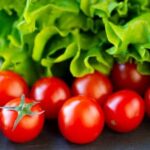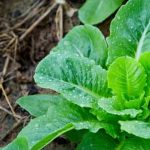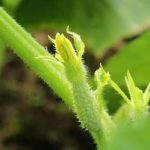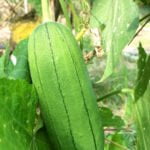Are you interested in starting a vegetable garden in Florida? Vegetable gardens in Florida can be both rewarding and challenging due to the state’s unique climate and soil conditions. In this article, we will explore everything you need to know about growing a successful vegetable garden in the Sunshine State.
When it comes to vegetable gardening in Florida, choosing the right vegetables to grow is essential for a bountiful harvest. Whether you’re a beginner or seasoned gardener, knowing which vegetables thrive in Florida’s climate can make all the difference. From tomatoes and peppers to squash and cucumbers, there are plenty of options to consider for your Florida vegetable garden.
In addition to discussing the best vegetables to grow, we will also cover topics such as selecting the ideal location for your garden, understanding the impact of Florida’s climate on vegetable gardens, preparing and amending soil, managing pests and diseases, irrigation tips, benefits of gardening in Florida, harvesting and preserving produce, as well as resources for community support. Stay tuned for valuable insights on how to create a flourishing vegetable garden in Florida.
Choosing the Right Location for Your Vegetable Garden in Florida
When it comes to choosing the right location for your vegetable garden in Florida, there are a few key factors to consider. First and foremost, you’ll want to think about sunlight.
Most vegetables need at least 6 hours of direct sunlight per day, so it’s important to pick a spot in your yard that gets plenty of sunshine. Additionally, you’ll want to ensure that your chosen location has good drainage, as overly wet soil can cause root rot and other problems for your plants.
Another important consideration when selecting a location for your vegetable garden in Florida is proximity to water. With the hot and often dry climate in the state, it’s crucial to have easy access to water for irrigation. Whether you plan to use a hose, drip system, or watering cans, be sure that your chosen garden spot is within reach of a water source.
Finally, you’ll want to think about convenience. Ideally, your vegetable garden should be located close to your home so that you can easily tend to it on a regular basis. This will make tasks like watering, weeding, and harvesting much more manageable.
| Vegetable | Best Planting Time |
|---|---|
| Tomatoes | February – April |
| Squash | February – March |
| Peppers | March – April |
By considering these factors and doing a bit of research on the specific needs of the vegetables you’d like to grow, you can select the perfect location for your Florida vegetable garden.
Understanding the Florida Climate and Its Impact on Vegetable Gardens
The climate in Florida can vary greatly depending on which part of the state you live in. The northern part of the state experiences a humid subtropical climate, while the southern part has a tropical climate.
This diversity can impact vegetable gardens in different ways. For example, in South Florida, where the temperatures are consistently warm throughout the year, gardeners can grow a wider variety of vegetables compared to their counterparts in North Florida, where they might have to contend with occasional frosts.
In addition to temperature variations, Florida’s climate also brings about high humidity and frequent rains, especially during the wet season. These conditions can create an ideal environment for pests and diseases that could affect your vegetable garden. It’s important for Florida gardeners to be aware of these factors and take preventive measures to protect their crops.
One way that Florida’s climate can actually benefit vegetable gardens is through its long growing season. In most parts of the state, gardeners can grow vegetables year-round. This means that with proper planning and care, you can enjoy multiple harvests throughout the year.
Additionally, certain crops like tomatoes and peppers thrive in the warm and sunny conditions that are typical in Florida. Despite some challenges posed by the climate, there are many advantages to growing vegetable gardens in Florida.
| Climate Factors | Impact on Vegetable Gardens |
|---|---|
| Variation in temperatures | Can limit or expand the types of vegetables that can be grown |
| High humidity and frequent rains | Create favorable conditions for pests and diseases |
| Long growing season | Allows for multiple harvests throughout the year |
Tips for Preparing and Amending Soil for Vegetable Gardens in Florida
When it comes to starting a vegetable garden in Florida, one of the most critical steps is preparing and amending the soil. The type of soil in Florida can vary greatly from region to region, so it’s essential to understand what kind of soil you have and how to improve it for optimal vegetable growth. Here are some important tips for preparing and amending soil for vegetable gardens in Florida:
- Conduct a soil test: Before you start planting, it’s crucial to understand the pH level and nutrient content of your soil. You can conduct a soil test through your local agricultural extension office or use a DIY kit. This will give you valuable information on what amendments your soil may need.
- Amend with organic matter: Florida soils often lack organic matter, so adding compost, aged manure, or other organic materials can greatly improve soil structure and fertility. Work these amendments into the top several inches of soil before planting.
- Consider raised beds: In areas with poor drainage or sandy soils, raised beds can be a great solution for growing vegetables. Fill raised beds with a mix of topsoil, compost, and other amendments to create a suitable growing environment for your vegetables.
In addition to these tips, gardeners in Florida should also be mindful of the importance of mulching their vegetable gardens. Mulch not only helps conserve moisture and suppress weeds but can also gradually break down and add organic matter to the soil.
Taking the time to properly prepare and amend the soil for your vegetable garden in Florida will set the stage for healthy plant growth and bountiful harvests throughout the growing season.
Pests and Diseases to Watch Out for in Your Florida Vegetable Garden
When it comes to maintaining a successful vegetable garden in Florida, one key aspect to consider is the potential pests and diseases that can affect your crops. Being proactive and staying informed about the common issues in your area can help you better protect your plants and ensure a bountiful harvest.
Common Pests
Florida’s warm and humid climate creates an ideal environment for a variety of pests that can wreak havoc on your vegetable garden. Common pests to watch out for in Florida include aphids, caterpillars, whiteflies, and stink bugs. These pests can cause damage to the leaves, stems, and fruits of your plants, ultimately impacting their growth and productivity.
Plant Diseases
In addition to pests, Florida vegetable gardens are also susceptible to various plant diseases. Fungal diseases such as powdery mildew and downy mildew thrive in humid conditions, which are prevalent in Florida. Bacterial diseases like bacterial spot and blight can also affect your crops. It’s important to regularly inspect your plants for any signs of disease, such as yellowing leaves or unusual spots, so that you can take action promptly.
Natural Remedies and Prevention
To protect your Florida vegetable garden from pests and diseases, consider using natural remedies such as insecticidal soaps, neem oil, or introducing beneficial insects like ladybugs or lacewings. Proper crop rotation and good garden hygiene practices can also help prevent the spread of diseases. Additionally, choosing disease-resistant varieties of vegetables is a proactive step towards avoiding potential issues in your garden.
By being vigilant and knowledgeable about the potential threats to your vegetable garden in Florida, you can take the necessary steps to mitigate these risks and enjoy a thriving harvest.
Overall, being aware of the specific challenges posed by pests and diseases in vegetable gardens in Florida is essential for successful cultivation. Regular monitoring and prompt action will help ensure that your plants remain healthy and productive throughout the growing season.
Best Practices for Watering and Irrigating Your Florida Vegetable Garden
In order to have a successful vegetable garden in Florida, it is crucial to implement proper watering and irrigation techniques. The hot and humid climate of Florida can often result in the rapid evaporation of water from the soil, which means that your vegetable plants may need more frequent watering than in other regions. Here are some best practices for watering and irrigating your Florida vegetable garden:
- Utilize drip irrigation systems: Drip irrigation is the most efficient way to water your vegetable garden in Florida, as it delivers water directly to the base of the plants, minimizing evaporation and ensuring that the roots receive an adequate amount of moisture.
- Water in the morning or late afternoon: Watering during the early morning or late afternoon helps to reduce water loss through evaporation. It also allows the foliage of your vegetable plants to dry before nighttime, reducing the risk of fungal diseases.
- Monitor soil moisture: Invest in a moisture meter to regularly check the moisture levels in your soil. This will help you determine when it’s time to water and prevent overwatering, which can lead to root rot and other issues.
Aside from these best practices, consider using mulch around your vegetable plants to help retain soil moisture and reduce weed growth. Additionally, be mindful of seasonal weather patterns in Florida, as periods of heavy rain may require you to adjust your watering schedule accordingly.
Overall, implementing proper watering and irrigation techniques is essential for maintaining a healthy and thriving vegetable garden in Florida’s unique climate.
Benefits of Growing Vegetable Gardens in Florida
Florida is a fantastic place for people to grow their own vegetable gardens. There are several benefits to doing so, starting with the fact that Florida’s climate is ideal for growing many types of vegetables throughout most of the year. Additionally, growing your own fruits and vegetables can save you money in the long run, as you won’t have to constantly buy these items from the store.
Health Benefits
Growing your own vegetable garden in Florida can also lead to improved health. By consuming fresh, homegrown produce, individuals can ensure that they are getting all the necessary nutrients without any harmful pesticides or chemicals. Additionally, gardening itself is a physical activity that can improve one’s overall health and well-being.
Economic Benefits
Aside from personal health benefits, growing a vegetable garden in Florida can also bring economic advantages. By reducing grocery costs and promoting self-sufficiency, individuals can lower their living expenses significantly. Moreover, producing surplus crops could provide an additional income stream if gardeners decide to sell their excess produce at local farmers’ markets or through community-supported agriculture programs.
Environmental Benefits
Another benefit of having a vegetable garden in Florida is the positive impact it has on the environment. Homegrown produce does not have to be transported thousands of miles to reach consumers, which decreases carbon emissions and helps combat climate change.
Additionally, as gardeners avoid using harmful pesticides and chemical fertilizers, they contribute to less pollution while creating healthy ecosystems for beneficial insects and animals. Overall, the environmental benefits of growing a vegetable garden in Florida are substantial not just for individual gardeners but also for communities as a whole.
Harvesting and Preserving Your Florida Vegetable Garden’s Produce
One of the most satisfying aspects of having a vegetable garden in Florida is being able to enjoy the produce that you have worked so hard to cultivate. When it comes to harvesting your vegetables, timing is everything.
For example, tomatoes should be picked when they are fully ripe and have a deep color, while leafy greens such as lettuce and spinach can be harvested as soon as they reach a size suitable for eating. It’s important to regularly inspect your garden and harvest vegetables at the right time to ensure the best flavor and texture.
Once you have harvested your vegetables, it’s essential to know how to properly preserve them to enjoy later on. Canning, freezing, pickling, and drying are all popular methods for preserving produce from your Florida vegetable garden. Canning is a great option for vegetables like beans and tomatoes, while freezing works well for items such as corn and berries.
Pickling is a favorite option for cucumbers, peppers, and other sturdy veggies. Drying herbs like basil and oregano is easy and convenient.
It’s also important to consider how you will store your preserved vegetables. Proper storage techniques can help prolong the shelf life of your produce.
Keep canned goods in a cool, dark place; frozen vegetables should be stored at consistently low temperatures; pickled items can be kept in the refrigerator; dried herbs should be stored in airtight containers away from light and moisture. By properly storing your preserved produce from your vegetable gardens in Florida, you can continue to enjoy the fruits of your labor long after the growing season has ended.
Community and Resources for Florida Vegetable Gardeners
In conclusion, vegetable gardens in Florida offer a wealth of benefits and opportunities for individuals and communities. By growing your own produce, you can enjoy fresh, flavorful vegetables while also promoting sustainability and self-sufficiency. The vibrant gardening community in Florida provides valuable resources and support for those looking to start or enhance their vegetable gardens.
Engaging with local gardening groups, attending workshops, or seeking out online forums can connect you with experienced gardeners who can offer advice tailored to the unique challenges of cultivating vegetable gardens in Florida. Additionally, many communities have shared gardening spaces or farmer’s markets where you can exchange ideas and produce with fellow gardeners.
Furthermore, by participating in the Florida gardening community, you can contribute to initiatives that promote healthy eating and food security. Whether it’s through volunteering at community gardens or advocating for sustainable agriculture practices, your involvement can make a meaningful impact on the wider community. Overall, the camaraderie and resources available to Florida vegetable gardeners create an enriching experience that extends beyond individual harvests.

If you’re looking to get into vegetable gardening, or are just looking for some tips on how to make your current garden better, then you’ve come to the right place! My name is Ethel and I have been gardening for years. In this blog, I’m going to share with you some of my best tips on how to create a successful vegetable garden.





